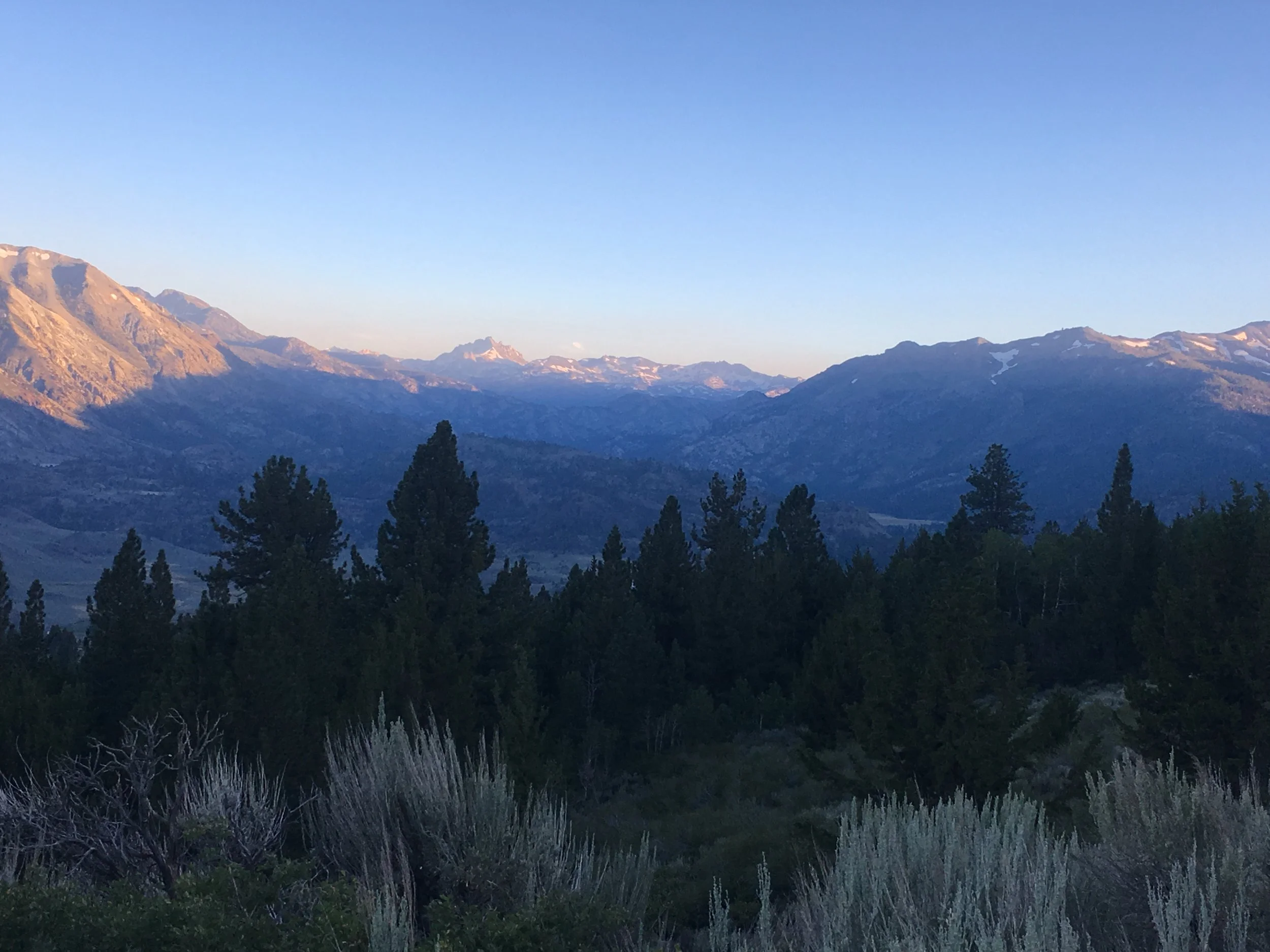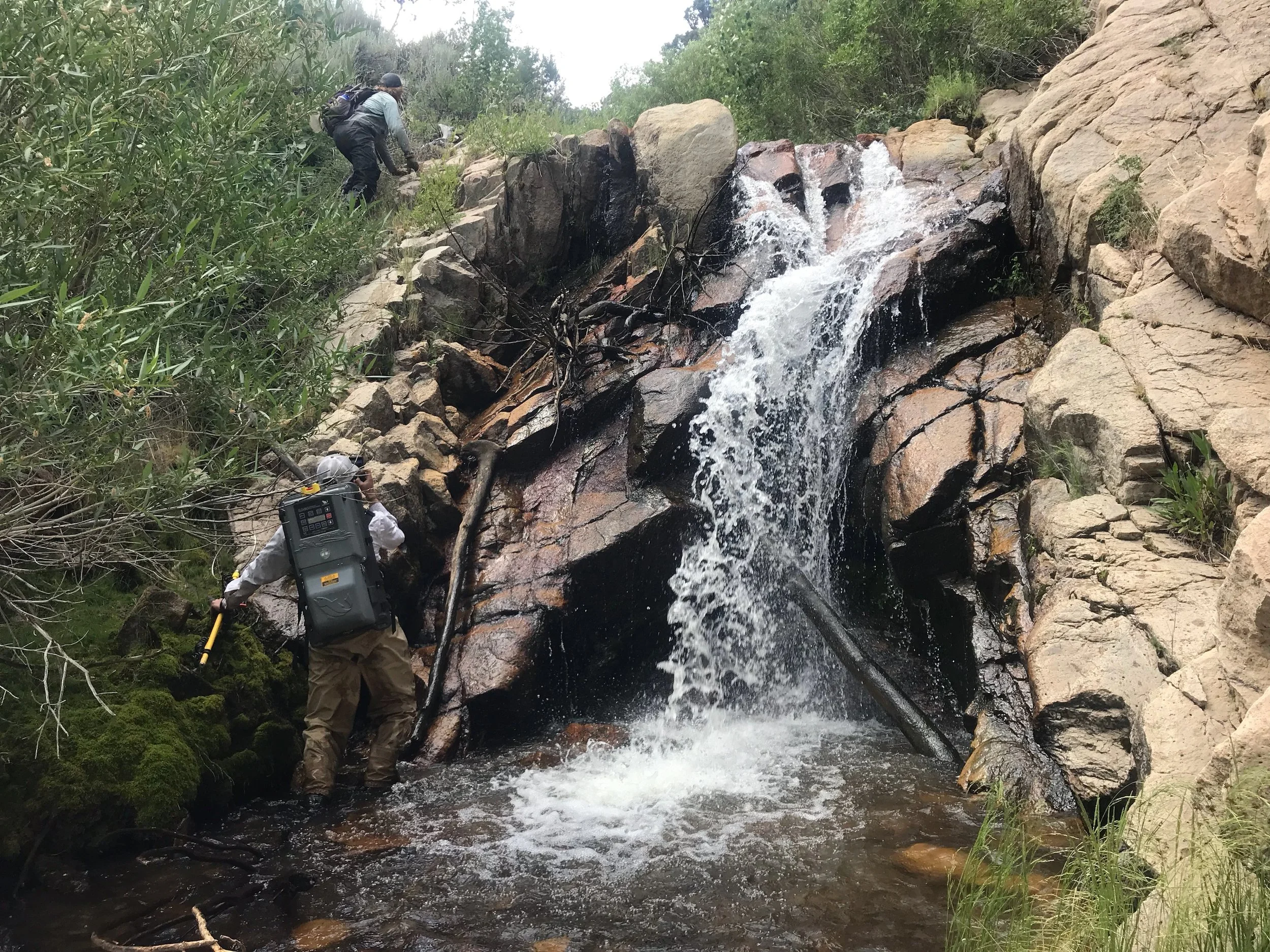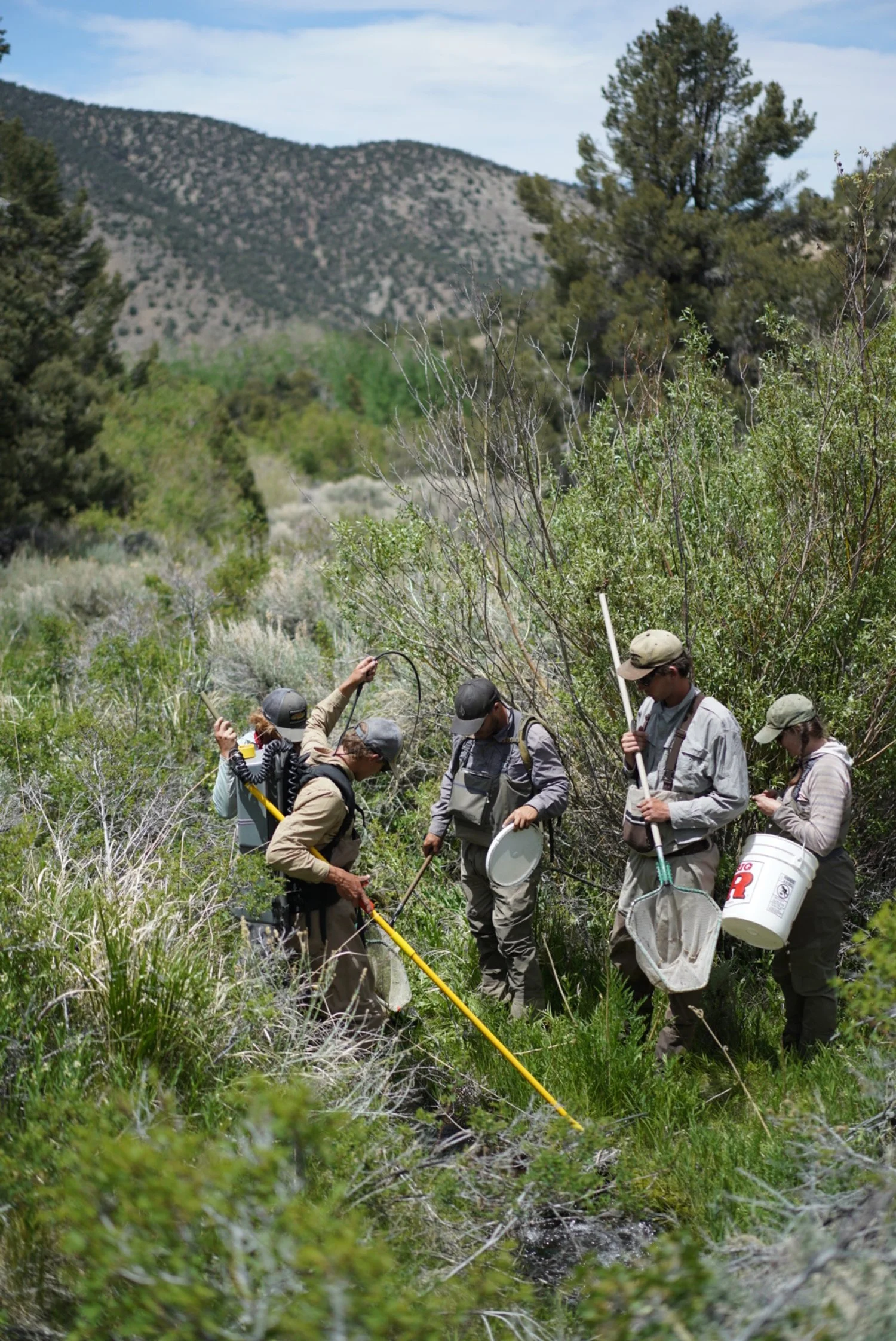Walker RIT contact: Nick Buckmaster; CDFW; nick.buckmaster@wildlife.ca.gov, (760)920-8391
Murphy Creek
Mill Creek
Cottonwood Creek
The Walker Management Unit (WMU) covers several USGS hydrologic units, including the: East Walker (HUC 16050301), West Walker (HUC 16050302), Walker (HUC 16050303), and Walker Lake (HUC 16050304). Currently, there are seven potential LCT recovery populations in the WMU. In general, these populations contain low to moderately low genetic metrics and abundances; this is logical considering all these populations were founded with individuals from one, small headwater stream population in By-Day Creek. Three of the seven populations (By-Day, Murphy, and Cottonwood Creeks) are unlikely to be resilient, with limited management options. The other four existing LCT populations (Silver, Slinkard, Mill, and Wolf Creeks) however, have the potential to be resilient by reducing current threats. Efforts to improve habitat conditions throughout the Walker River watershed, and water inflow to Walker Lake, are ongoing. However, it is unclear when Walker Lake will be restored enough to contain an LCT population. Walker Lake (a unique desert terminus lake) and the associated stream and alpine lake habitats (much of which is in the climate-resilient Sierra Nevada Mountains) were very productive historically. Reestablishing a lacustrine population in this unit will require the continuation of extensive restoration efforts to improve habitat conditions within Walker Lake and the lower portion of Walker River.
The recovery objectives for LCT in the WMU include:
WMU 1) Manage and minimize threats (i.e., competition, predation) and hybridization risk from non-native trout species to allow for the formation and/or maintenance of WMU LCT populations identified in WMU objectives 2–5; and
WMU 2) Provide enough stream/river habitat to allow for the expression of migratory life-history characteristics in at least 1 recovery population (i.e., interconnected population); and
WMU 3) Establish 3 additional recovery populations that are spatially separated from each other, and the interconnected population required by WMU objective 2; and
WMU 4) Ensure at least 1 of the 4 recovery populations required by WMU objectives 3 or 4 is in a system with a lake; and
WMU 5) Maintain existing, isolated populations that cannot individually meet the recovery population benchmarks provided in this document. Actively manage those populations together based on guidance provided in the pending LCT Genetics Management Plan to result in at least 1 additional recovery population; and
WMU 6) Improve habitat conditions throughout the Walker River Basin, and water inflow to Walker Lake, to provide for the future opportunity to reintroduce an LCT population into Walker Lake.




